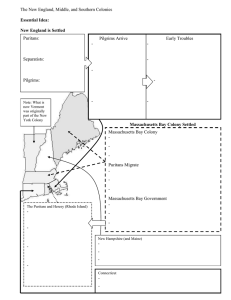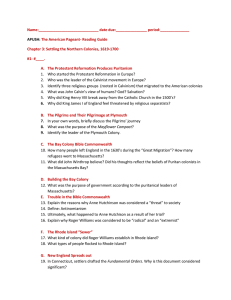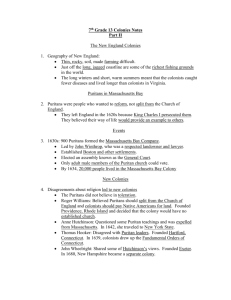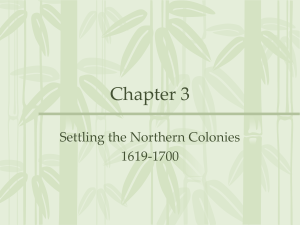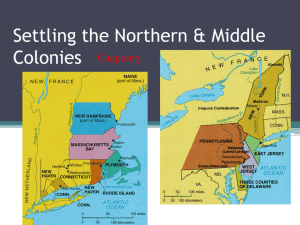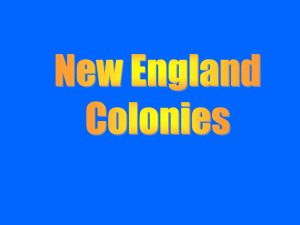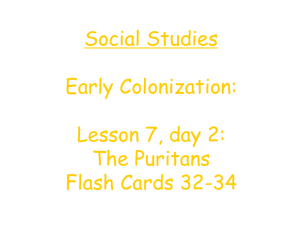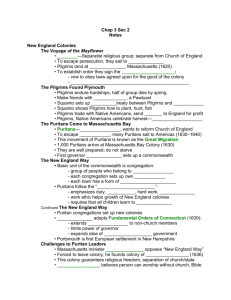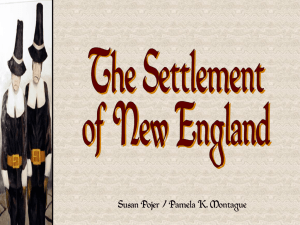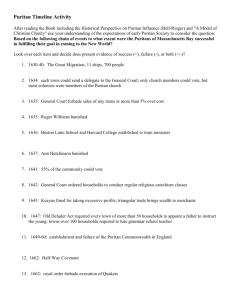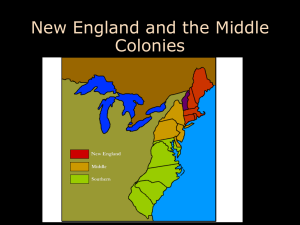Northern Colonies: Puritanism to Pennsylvania Study Guide
advertisement
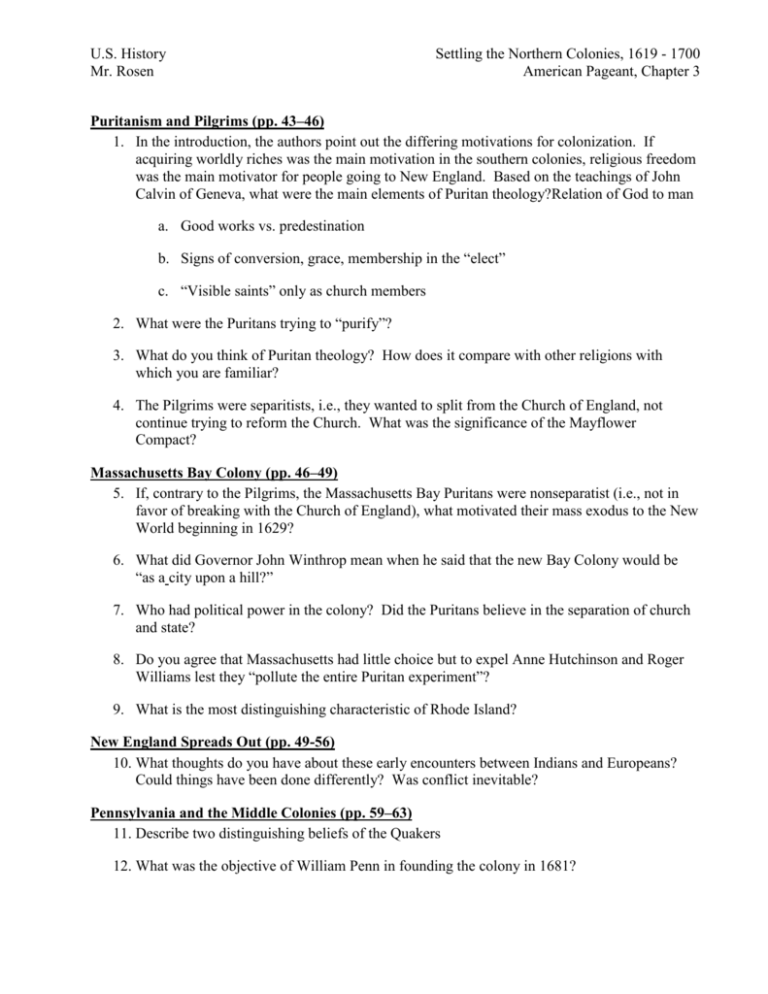
U.S. History Mr. Rosen Settling the Northern Colonies, 1619 - 1700 American Pageant, Chapter 3 Puritanism and Pilgrims (pp. 43–46) 1. In the introduction, the authors point out the differing motivations for colonization. If acquiring worldly riches was the main motivation in the southern colonies, religious freedom was the main motivator for people going to New England. Based on the teachings of John Calvin of Geneva, what were the main elements of Puritan theology?Relation of God to man a. Good works vs. predestination b. Signs of conversion, grace, membership in the “elect” c. “Visible saints” only as church members 2. What were the Puritans trying to “purify”? 3. What do you think of Puritan theology? How does it compare with other religions with which you are familiar? 4. The Pilgrims were separitists, i.e., they wanted to split from the Church of England, not continue trying to reform the Church. What was the significance of the Mayflower Compact? Massachusetts Bay Colony (pp. 46–49) 5. If, contrary to the Pilgrims, the Massachusetts Bay Puritans were nonseparatist (i.e., not in favor of breaking with the Church of England), what motivated their mass exodus to the New World beginning in 1629? 6. What did Governor John Winthrop mean when he said that the new Bay Colony would be “as a city upon a hill?” 7. Who had political power in the colony? Did the Puritans believe in the separation of church and state? 8. Do you agree that Massachusetts had little choice but to expel Anne Hutchinson and Roger Williams lest they “pollute the entire Puritan experiment”? 9. What is the most distinguishing characteristic of Rhode Island? New England Spreads Out (pp. 49-56) 10. What thoughts do you have about these early encounters between Indians and Europeans? Could things have been done differently? Was conflict inevitable? Pennsylvania and the Middle Colonies (pp. 59–63) 11. Describe two distinguishing beliefs of the Quakers 12. What was the objective of William Penn in founding the colony in 1681? 13. The Quakers tried out a rather novel and enlightened approach to the native populations. What do the authors mean when they say that “Quaker tolerance proved the undoing of Quaker Indian Policy”? 14. Describe two distinguishing characteristics of the “Middle Colonies” (N.Y., N.J., Del., Pa.): Terms and People Pages 43–46 Protestant Reformation John Calvin Church of England (1530s) “Puritans” Pilgrims Plymouth Colony Mayflower Compact William Bradford Pages 46–49 Massachusetts Bay Colony (1629) “Great Migration” (1630s) John Winthrop “Freemen” Congregational Church Anne Hutchinson (1638) Roger Williams Rhode Island Pages 49–56 New England Confederation (1643) English “Restoration” (1660) Dominion of New England (1686) Navigation Laws Sir Edmund Andros Pages 56–59 Dutch East India Company New Netherland (1623–1624) New Amsterdam Pages 59–63 Society of Friends/“Quakers” William Penn Pennsylvania (1681) The middle or “bread colonies”
